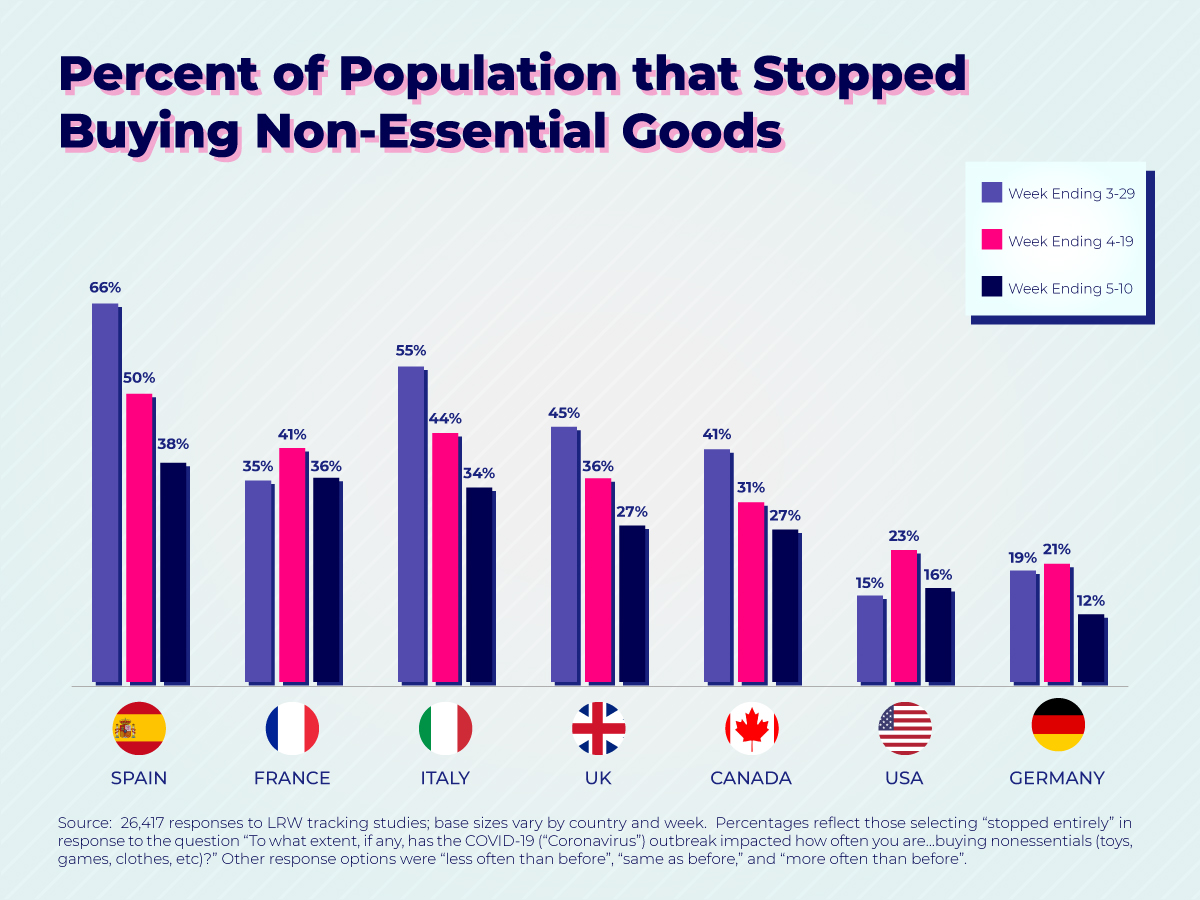

In the early days of the pandemic and stay-at-home orders, some businesses scrambled to pull advertising that risked offending consumers with unintentionally tone deaf or insensitive messaging that had been drafted before COVID-19 came to town. Even with a captive audience trapped at home with little else to do but consume media, many of these advertisers have remained off air, either out of an abundance of caution, or a desire to cut costs when consumer spending is down.
Meanwhile, others hustled to create brilliant ads that resonated with the circumstances, needs, and fears of consumers in the moment. It was a smart advertising tactic that kept those brands top-of-mind and built affinity without appearing to peddle their wares.
But it wasn’t long before all these marvelous ads quickly started to bleed together in consumers’ minds, almost as if they had all been created by using the same formula:
As the world begins a phased reopening country-by-country, state-by-state, and even city-by-city, it’s clear that people are looking to safely and responsibly move on. Advertisers should follow suit – and they may even be able to lead the way.
Despite record-high unemployment, consumers are showing an eagerness to open up their purse strings again. According to LRW’s own global tracking, only 16% of Americans say they’ve stopped entirely buying non-essential items, down from 23% three weeks earlier. This downward trend is even more pronounced in several other Western nations, though most of them remain more conservative than Americans with respect to discretionary spending.

Perhaps not surprisingly, consumers in these countries also are starting to grow tired of the “we’re in this together” and “in these uncertain times” messages tied to the pandemic. Based on the most recent waves of Dynata’s COVID-19 tracking, several countries are showing significant downward trends on wanting all companies to filter their communications through a coronavirus lens.

In fact, most consumers have been okay all along with some amount of “normal” advertising. According to a survey conducted by GlobalWebIndex, even in the full throes of the pandemic in mid-April (does that feel like a lifetime ago already?), only about 20% of consumers in these countries disapproved of “running ‘normal’ advertising campaigns (which aren’t related to coronavirus)”
That said, consumers don’t want advertisers to ignore the pandemic and the challenges it presents altogether, so long as there is a relevant connection. But they can be unforgiving when presented with social conscience advertising that seems inauthentic or unsupported by a brand’s actions.
As people head back to bars and beaches, there’s a belief among some segments of the population that the “new normal” doesn’t need to be all that different from the old normal, as long as we open up the economy and get back out there. So, in most countries (or selected regions within them), it may be time to shift from widespread reliance on “safer-at-home” themes to “safety-away” themes. This shift can take the form of more optimism than empathy, more supporting than caretaking, and more inspiring than mourning.
Some companies, such as Progressive Insurance, are breaking out of the somber formula and leaning into their humorous brand personality to straddle the line between acknowledging current realities and helping people be in a more positive headspace:
Bud Light is harkening back to a popular humor-based campaign from the past, with some executions that are better for those still under stay-a-home orders, and others that are better for areas that have opened up.
But humor is not the right tone for all brands. Another welcome voice is empowered optimism and teamwork. Ford’s “Built for America” campaign, for example, still celebrates its coronavirus response, but focuses on supporting America’s recovery:
Attitudes toward reopening are different from market to market, and they may even vary at micro-levels within each of those markets. That’s why marketers and media planners should rely on the power of personalization and targeted ad buying to deliver the right message to the right slice of the populace. These strategies should not only be based on geography and out-of-home geo-location, but also on ideologies, given that there is a massive divide on whether people think we are opening up too soon.
A word of caution: advertisers should not discard their “alone together” messages altogether. If public health officials’ predictions are correct, and the fall brings a second wave of cases leading most to hunker down in their homes again, marketers who have shifted to “reopening” and “rebuilding” messages should be prepared to dust off and run updated versions of their empathetic in-home executions.
You must be logged in to post a comment.